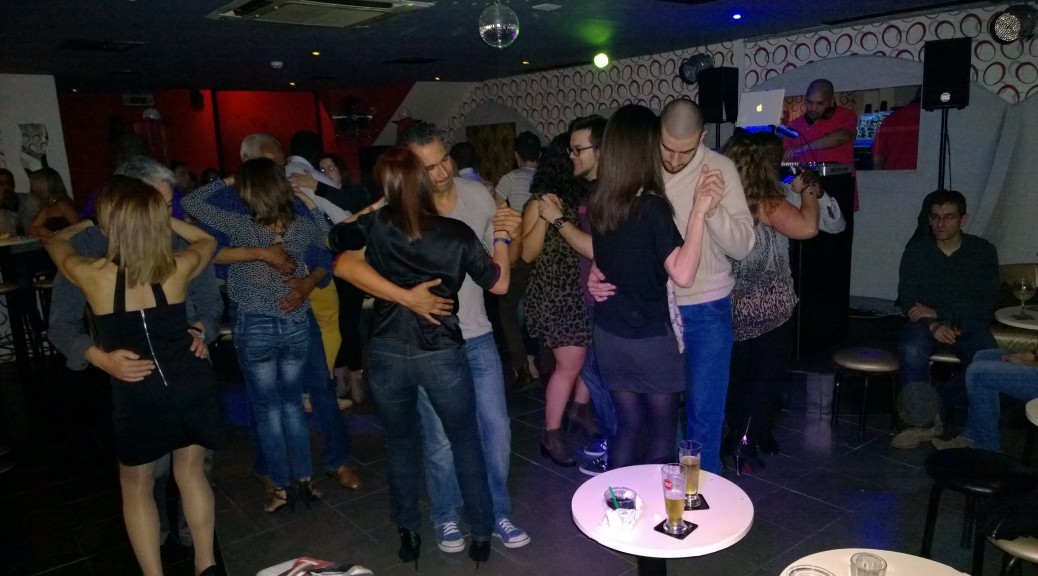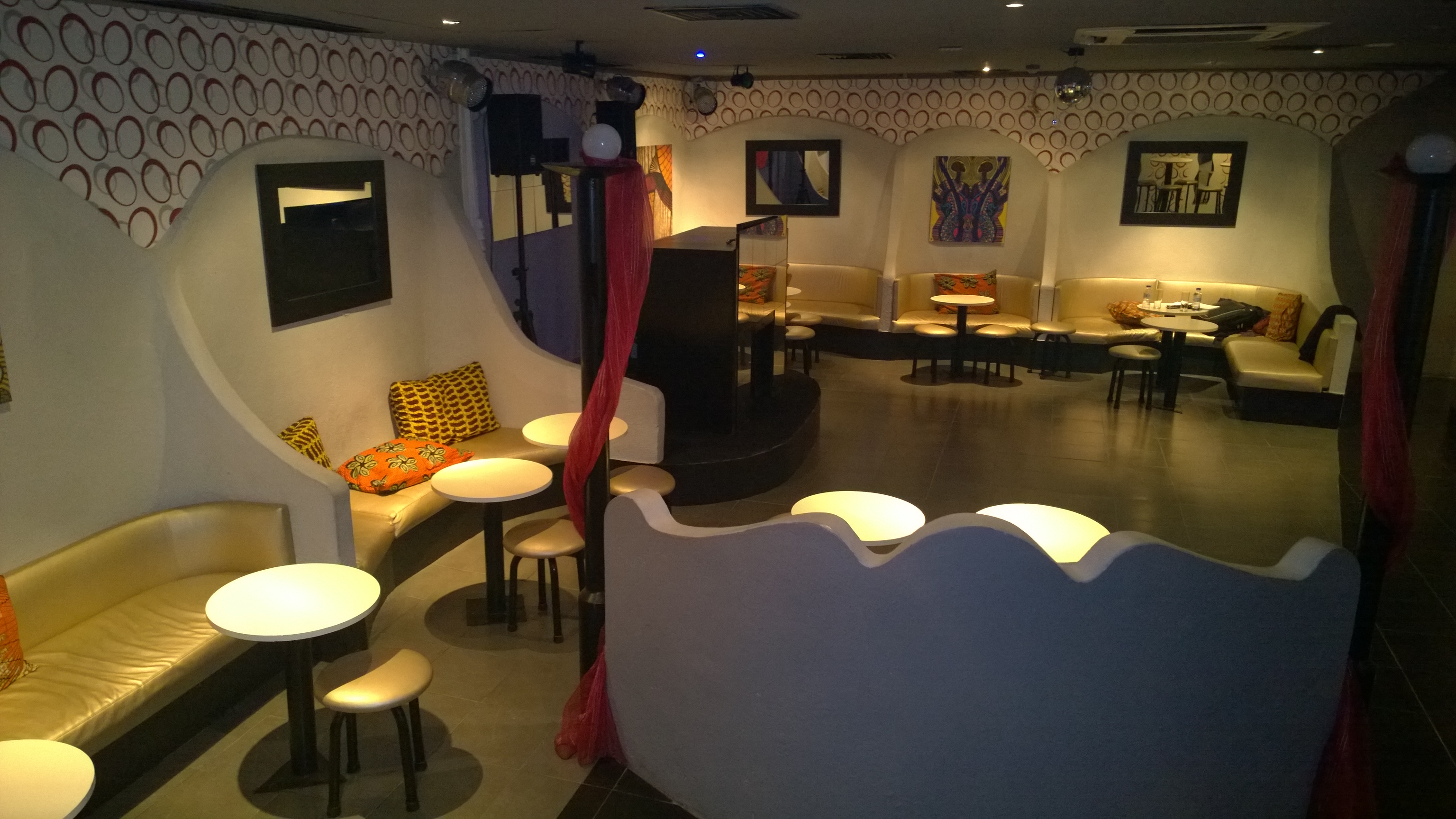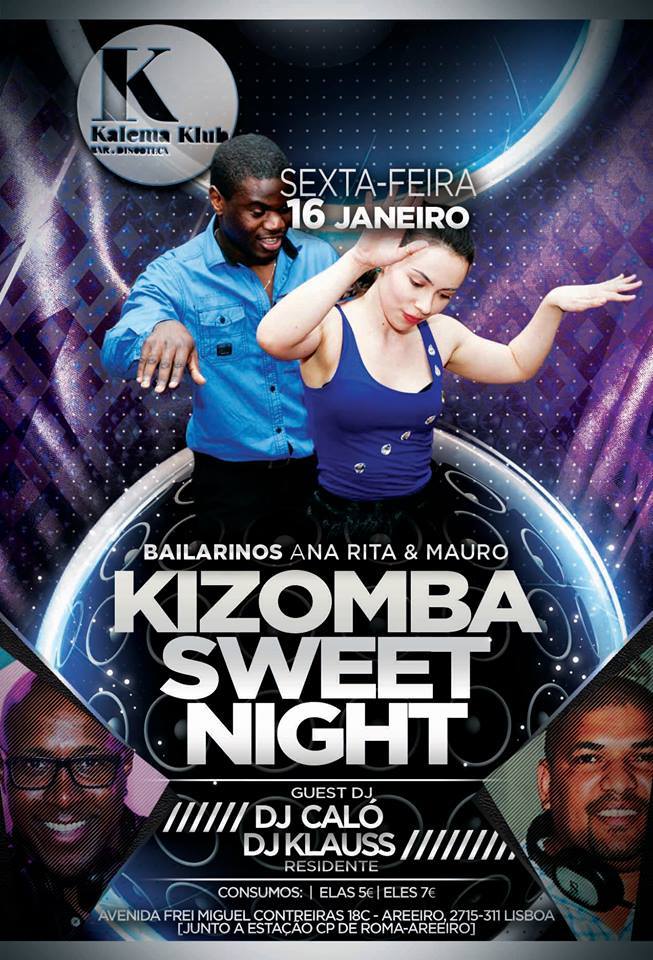After last week’s visit to one of the classical African houses of Lisbon, A Lontra, today I propose taking us to a newer one. The landscape of houses for dancing African music in Lisbon is so dynamic, and the craze for dance is so strong that we can find new clubs opening even in the hardest times of financial crisis in Portugal. A good example of this is Kalema Club: each disco has its own personality, and Kalema attracted my attention from the first time I stepped into the house.
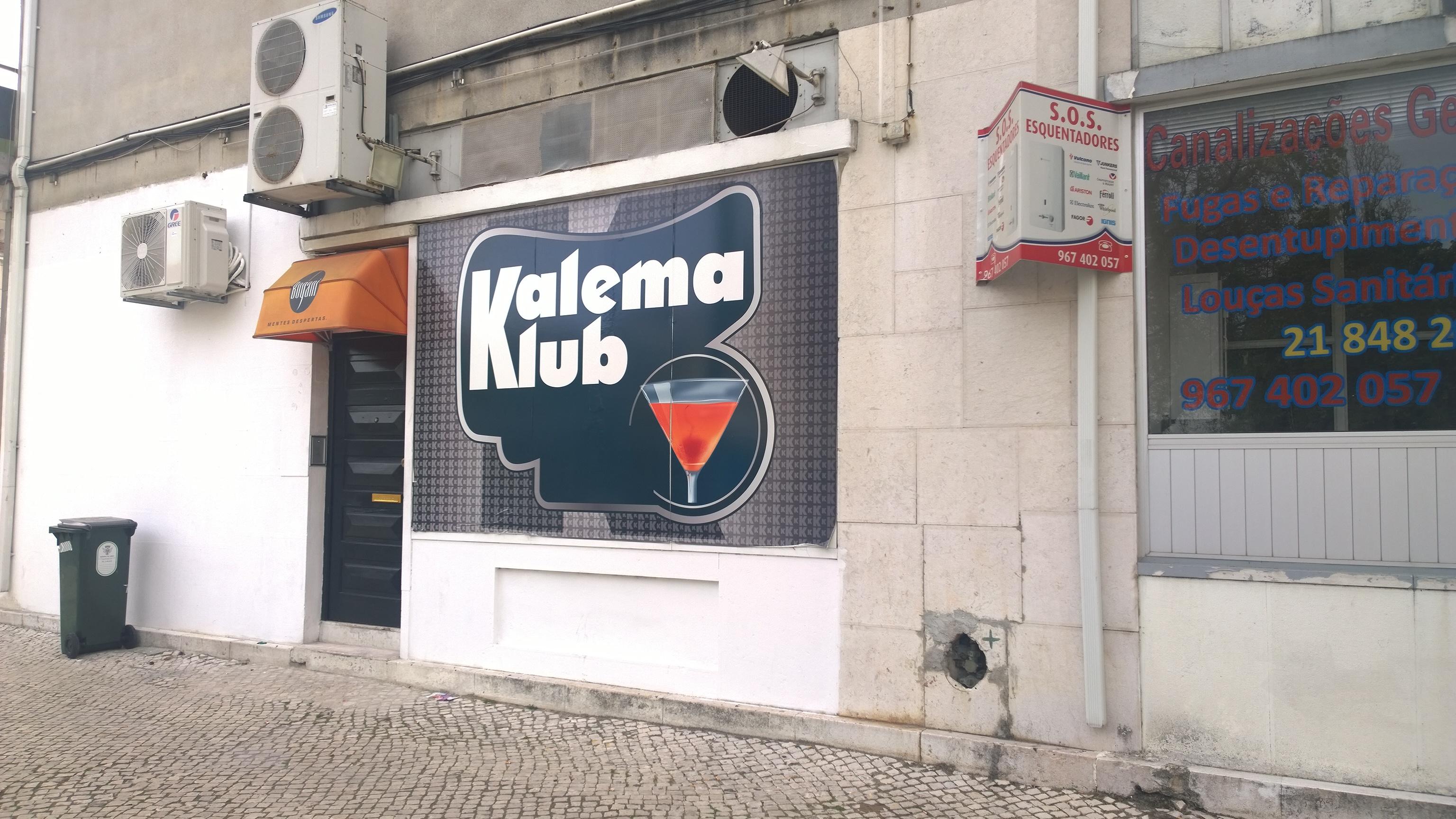
Kalema Club is a warm and welcoming house with a capacity of a bit more than 100 people. It is situated in the northern zone of Lisbon, at Avenida Frei Miguel Contreiras 18C. The golden and earthy colours of the lights and furniture, the comfortable sofas where you can sit freely and the non-huge but crowded dancefloor make you feel at home since the moment you arrive.

Whenever you decide to go to the bar and ask for a drink, you will always find the beautiful smile of Zanatt, barwoman and co-owner of the club with Ricardo Rodrigues.
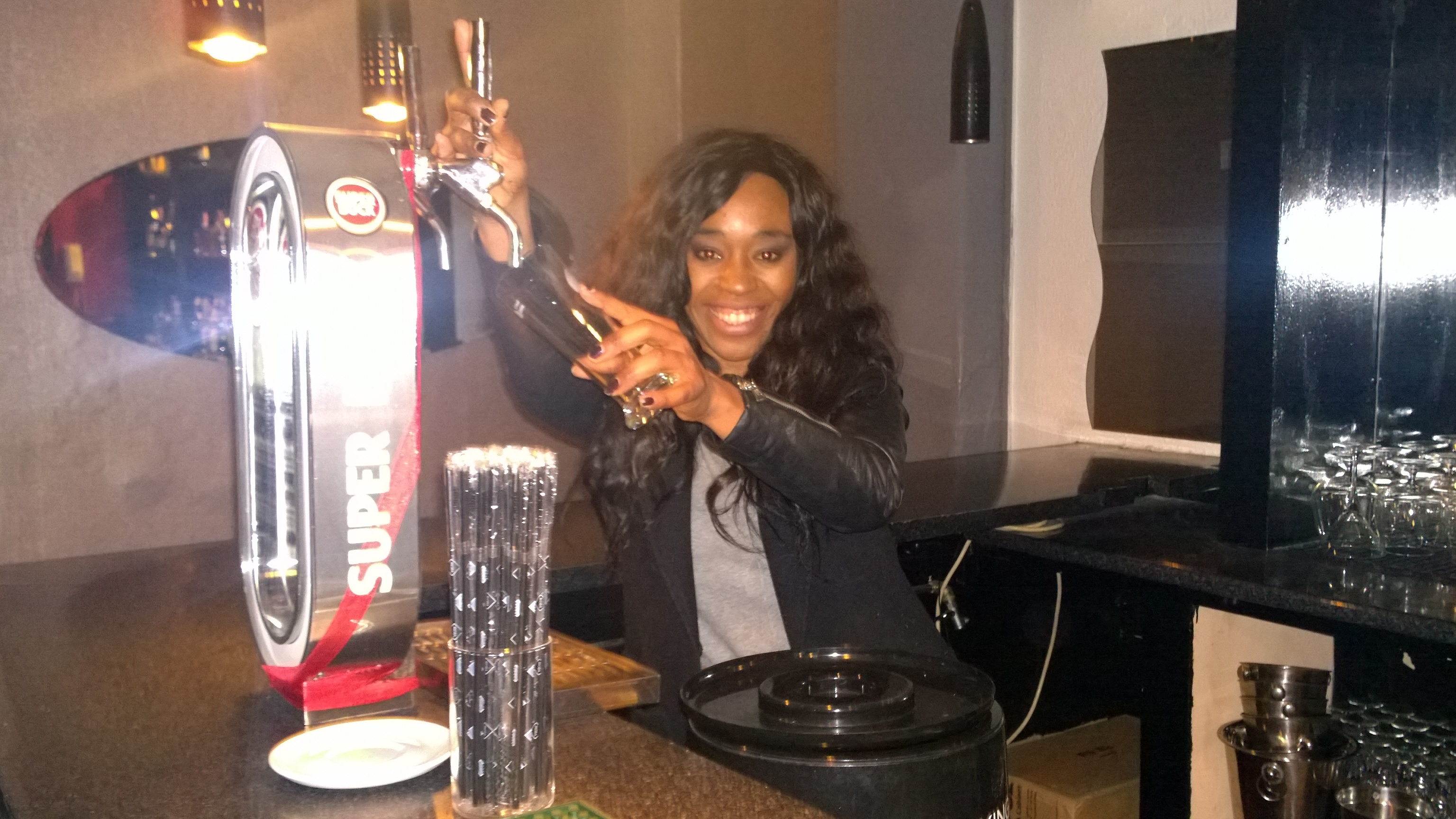
One night in Kalema: ethnographic description
“Raluca, the promotor of Friday nights of Kalema Club is waiting at the door to welcome us with her shiny smile as we arrive. She is a really nice Romanian young woman who became a lover of African music in Lisbon. As she has great social skills, she has been recently included in the team of promotors of Fridays nights in Kalema. It means that we are on her guestlist and she invites us to sit on her table. The security man gives us a paper card of consumption. This is the most extended system in this kind of clubs in Lisbon: you don´t need to pay when you enter, and everything you ask for will be marked on your card. To anyone who is used to pay right in the moment of serving, this card system makes you feel that you are not spending money at all (until the moment of leaving, of course!). Before you leave, you pay the total amount and your card is stamped. This is the proof of payment that you must show to the security staff to be allowed to leave.
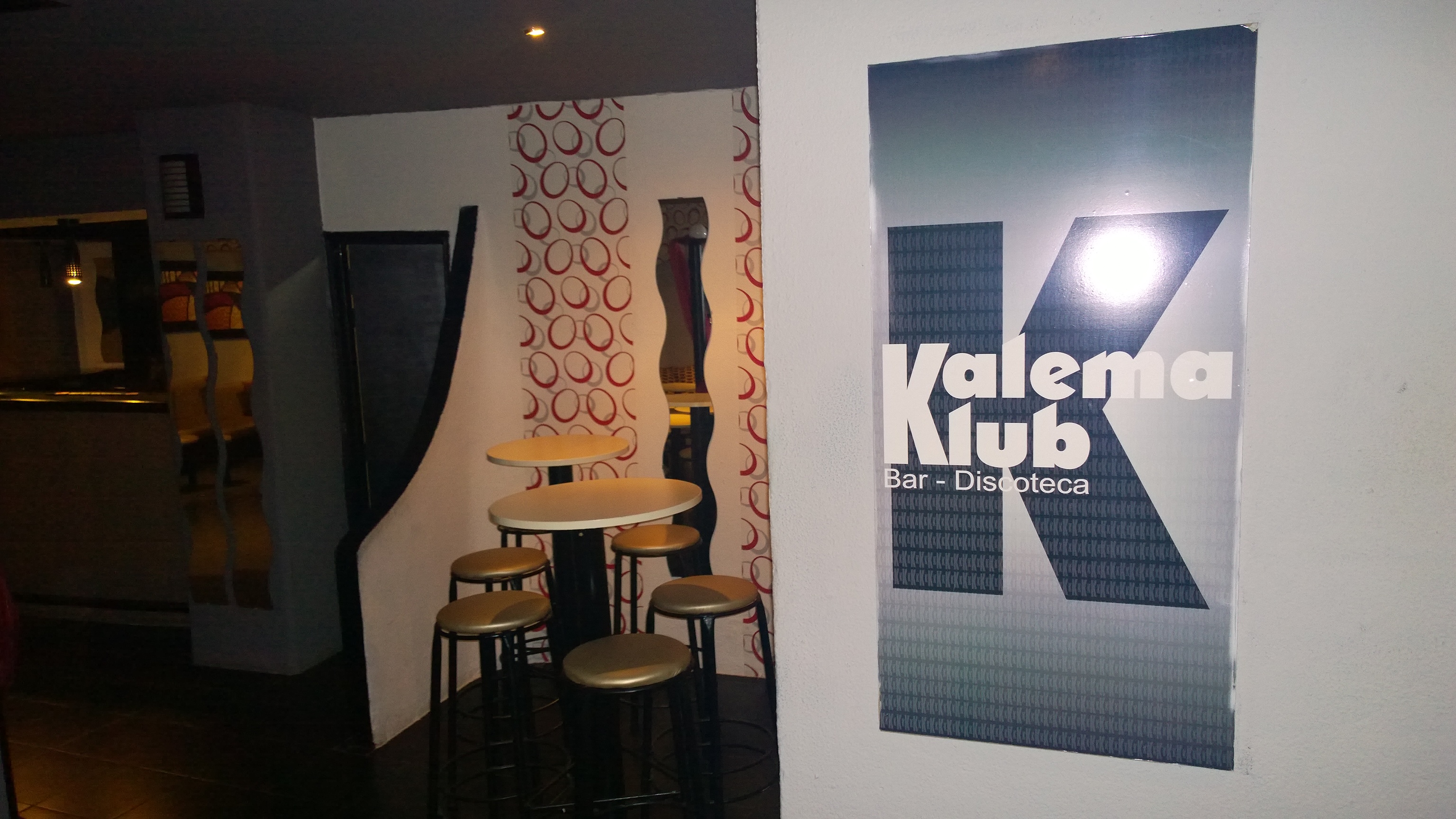
After crossing the entrance door, as you go downstairs you can feel the beats of kizomba reverberating closer with each step. Once at the level of the dancefloor, we go to the table where some friends are sitting. After being introduced to the rest through the smile-and-kiss ritual, we can sit down as part of the group. We can now be considered part of the collective social subject “our table”. I look around and see that all the sofas are occupied by groups of people that chat together and lean their drinks on the tables beside. Everyone is dressed in a weekend fashion, in varying degrees of formality that don´t go to the extremes (neither suits-and-ties, nor sport shoes-and-jeans). All the tables and sofas are oriented looking at the dancefloor and, as the space is not big, it is possible to observe almost every corner from any seat. The dancefloor is never totally empty but never totally packed up, leaving space for dancing without accidents. Most people come back to their original tables of reference after each dance.” (Fieldwork Diary)
This continuous cycle of going to the dancefloor when favourite songs are played and coming back “home” afterwards made me remember what I had witnessed in other African houses such as Mwangolé or Sussussu. But…this is not what I was used to see in any of the typical kizomba parties I have attended here in Lisbon…
The riddle of Kalema
Kalema became a mystery for me since the first night I went there: I was very curious about was what I perceived as a striking mix of ambiences. As far as I have witnessed in my fieldwork until today, in a “typical African disco” of the old style (80s and 90s), we will find people drinking and chatting in groups sitting on sofas beside tables around a dancefloor. Most of the time they will be talking and watching people dance (what is usually called convívio), and only in certain special moments they will jump on the dancefloor. By contrast, in the houses and parties that kizomba school people prefer, most of the time they are not sitting: instead, they are dancing or standing around the dancefloor, so that chatting and drinking is much of a secondary activity. In these contexts (such as Barrio Latino on Thursdays or, more recently, B.leza on Sundays), chairs and sofas become an obstacle for the dance or an improvised bengaleiro (place to leave their coats and bags). Apparently, Kalema broke that rule: being frequented by a mix of kizomba school people and Africans, all of them shared the habit of sitting on the sofas in groups and talking. Why? What was going on? I decided to resolve this intriguing fact that made Kalema such a special place. An interview with the co-owners, Ricardo Rodrigues and Zanatt, finally led me to the answer.
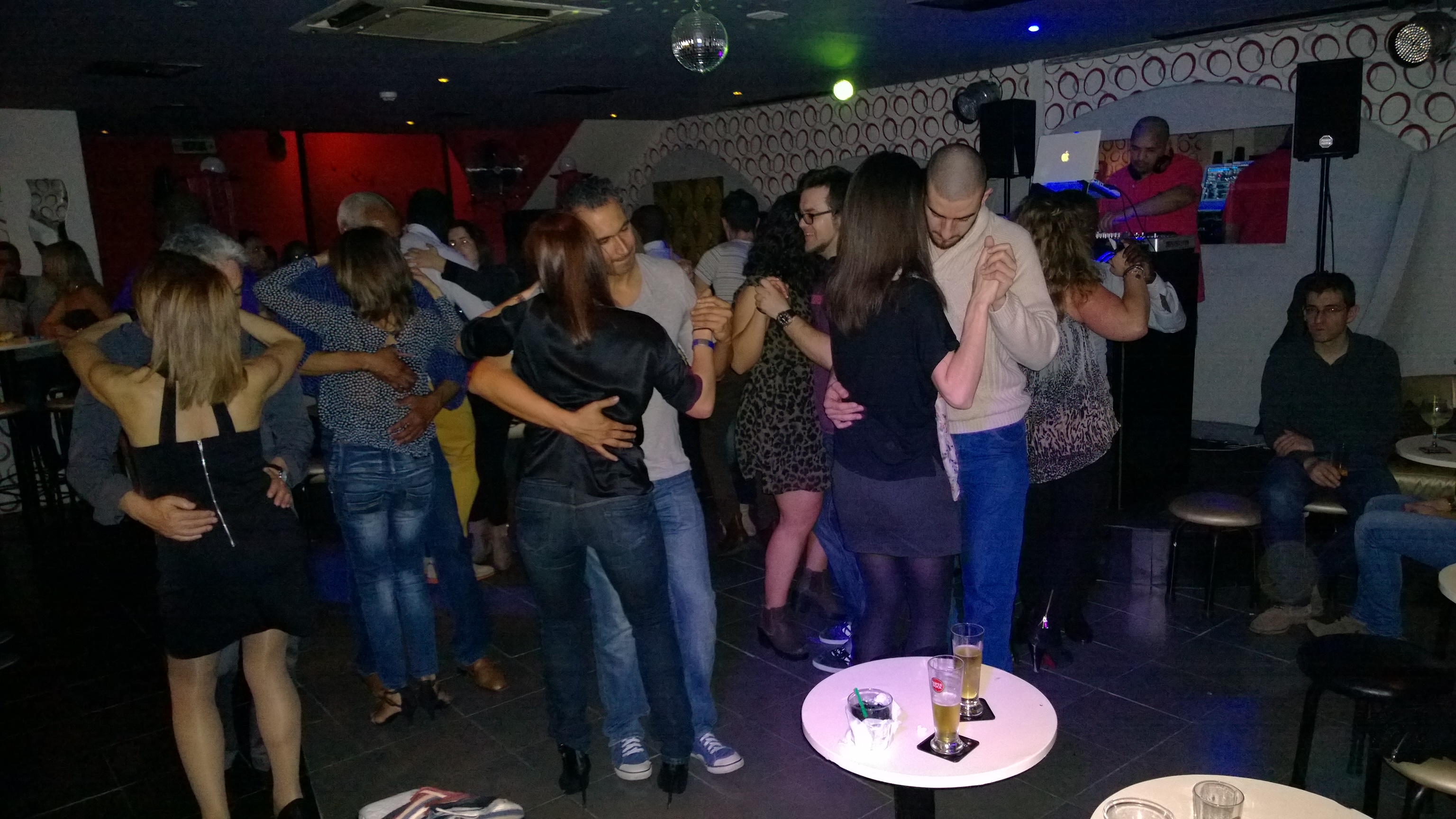
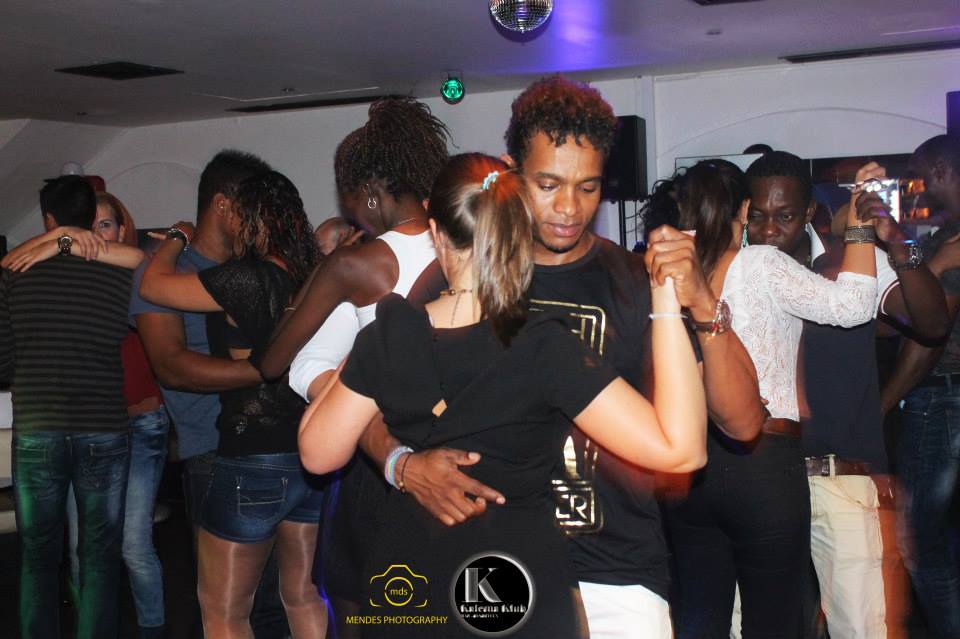
History of Kalema
Kalema Club opened just a few years ago, the 8th November of 2013, as Ricardo remembered immediately. The place already existed, and it was known as Terra da Música. To give it a new life, it was essential to change the name, the decoration, and the ambience. Interestingly, Ricardo spent a part of his life in Cape Verde and opened a house that called RClub. He used to go to another disco that was called Kalema, and the name inspired him. “Kalema” is the name given to a strong swell that beats the Western African coast (what could be considered a metaphor for the emotional state in which people get into through dancing.) Apart from the beautiful sound of the word, one of the reasons why Ricardo chose this name is because, according to him, we can find this term everywhere in the PALOPs: a general reference of Portuguese-speaking Africa that is not specific of any country. In this way, it could make people from diverse African countries feel identified with it. The two co-owners are well knowers of the African nights of Lisbon: Zanatt, from São Tomé, has lived in Lisbon for a long time, and Ricardo, Portuguese, has a quite interesting history of relations with Africa. Their intention was opening up a new African disco with a special personality that could make it different from the others. The boom of kizomba changed their plans: school kizomba lovers started to come and introduced their social rules. As the house started receiving more and more clients of this kind, it became an unexpected social mix and it had to adapt to the needs of both types of public: a good balance of recent hits and old music, a combination of living-room-like space with kizomba workshops some nights. As a result, today we can find a quite interesting mix of nightclub cultures, social rules and dance styles that develop through crossed influences in a small-medium space.
Nevertheless, these cultural diversity provide with some difficulties to keep everyone happy. The first key point is the music: how can the DJ guide such a heterogeneous community through the night?
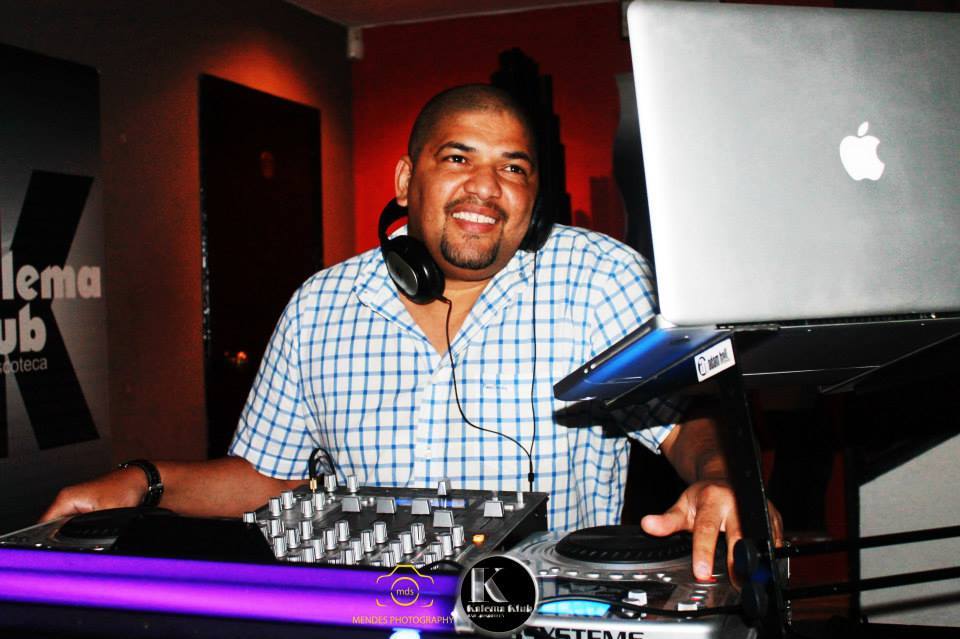
For this reason, the solution found was the following: Kalema offers the possibility of experiencing a night more focused on kizomba on Fridays and a more “African night” on Saturday. At this moment, on Friday night we can find some of the DJs most appreciated in the world of kizomba schools and festivals joining DJ Klaus, the resident DJ. On Saturday, the invited DJs are specialists in African audiences; for example, DJ Zauzito was there for a noite do semba (semba night).
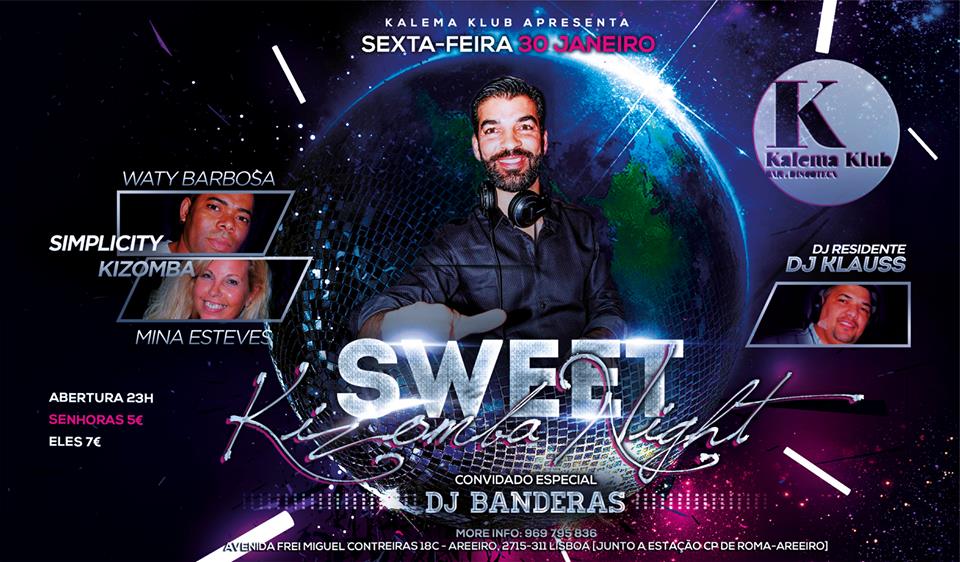
Summing up, if you go on Friday, you may find a kizomba workshop or a show by a well-known teacher; if you go on Saturday, you may find something more similar to the nostalgic African discos of the 80s and 90s. Or you may find a surprise, as new realities are being created every weekend. What are the new shapes that African-ness is taking in Lisbon´s nights? Are we helping the blending of social groups and night cultures through the love for music and dance? The answers are waiting on the dancefloor of discos like Kalema in the next years, starting from tonight. We´d better not miss it!
Livia Jiménez Sedano is currently member of INET-MD (Instituto de Etnomusicologia-Centro de Estudos em Música e Danca) and her work is being funded by FCT (Fundação para a Ciencia e Tecnologia) of Portugal. She is a collaborator of Modern Moves Project and will become a full member on September 2015.


